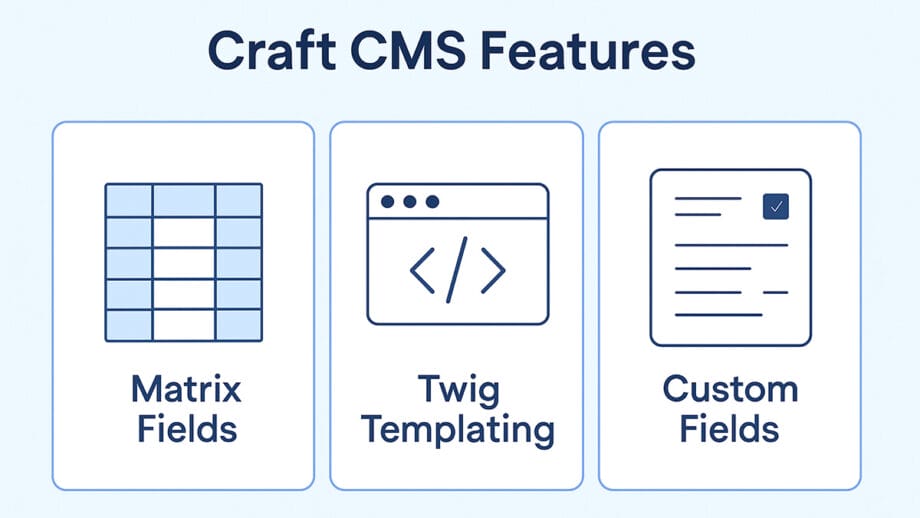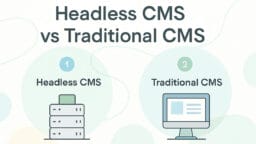Craft CMS has become the developer’s first preference, supporting everything from small to complex websites and delivering the best digital experiences.
According to W3Techs, Craft CMS backs 0.2% of all websites with a known CMS. In addition, Craft commands nearly 100% adoption of version 4 across users in July 2025.
The reason why many Craft CMS developers choose it is its easy-to-use control panel and headless support. Even a Developer Survey by Stackbit in 2025 highlights Craft CMS ranking among the top 5 CMSs preferred by headless implementations. It works more ideally when paired with tools like Next.js.
However, the client’s requirements are changing every now and then. Some demands for multi-site management with dynamic layouts. Others ask for advanced API integrations and performance optimization. And WordPress-backed websites lack in fulfilling these needs. Also, developers face challenges like scaling multilingual sites and minimizing database queries.
Fortunately, advanced Craft CMS development tricks come to the rescue. All the strategies, including headless APIs, caching optimizations, and more, are focused on building innovative, quick, and easy-to-maintain websites.
So, let’s get started with understanding these tips designed for the Craft CMS developers. These will help in ensuring speed, scalability, and easy maintenance of the CMS project.
Effective Craft CMS Development Strategies for Developers in 2025

Craft CMS is equipped with the right tools to ensure quality and hassle-free development, regardless of whether you’re building a complex site or you need to optimize your solutions for optimal performance.
Let’s discuss the latest development for Craft CMS in 2025 that can help you simplify development and deliver scalable solutions.
1. Use Project Config for Team-Based Version Control
The common frustration that all developers face with Craft CMS projects is that things work well for their device but fail to load on others. For example, changes in sections, field updates, and categories in one environment can cause issues in other environments. It further leads to manual workload or even broken webpages.
Project Config helps overcome such concerns. Its .yaml feature stores all the sections, field layouts, and so on in a version-controllable file. You can now track all the changes in the content structure.
Key Benefits of Using Project Config
- Environment consistency
- Improved collaboration
- Safe launch
What are the Best Practices to Follow
You should always commit to the project.yaml file with your code changes. When using Project Config, use the command – php craft project-config/apply. It will help implement similar changes in other environments as well.
Additionally, keep sensitive settings in environment variables for security.
“Project Config simplifies collaboration on big features by letting you share version-controlled settings and schema changes with others just as easily as deploying them. Multiple contributors’ changes can even be cleanly merged together.”Craft’s documentation emphasizes
2. Modular Content Architecture with Matrix and Super Table
Modern websites demand flexibility. The reason is not just users but also the marketers who look to create landing pages, banners, etc., without the need for a developer.
Additionally, developers want the edits they make not to break the site’s overall appeal or functioning.
Craft CMS development easily solves this challenge. It enables you to utilize Matrix and Super Table fields. This strategy scales well across landing pages, complex websites, and long-form editorial content.
Best practices to use the Matrix and Super Table
Matrix is Craft CMS’s built-in solution for flexible layouts. You define a field with multiple block types, but keep the types with a purpose and fewer in number. It’ll help avoid crowding the block with too many fields.
Also, use lowercase block handles for easy reference in Twig.
Super Table is helpful when you need nested repeatable content.
3. Advanced Twig Techniques
Twig logic grows in complexity as your Craft CMS projects grow. You’ll need to write code that is not only clean but also scalable and performant as well. Usually, the developers face concerns such as cluttered conditionals, repeated markups, and more.
Luckily, Twig functionalities help overcome all of these. You can use Twig’s Include and Macro features. It saves you from duplicating chunks of HTML across templates and ensures your code stays modular.
Best practices to follow Twig Logic
- You must add clean Conditional Logic to your content. It ensures your templates adapt easily to your content and produce better outputs.
- Also, you can work with Twig filters to format content. Twig offers a range of filters that help manage content display without overriding content with extra logic.
4. Performance Optimization Best Practices
Google rewards the sites that prioritize speed. However, even after many efforts, Craft CMS developers build slow-loading sites, and the reasons are many. They overlook caching and optimization.
Well, the best thing is that Craft gives you the tools to build fast sites. All you need is to know how to use them efficiently.
Best practices include
- You must implement Smart Caching with {% cache %}. It stores and reuses the block’s output. Thus, eliminates the need to rerun complex logic on every page load.
- Focus on reducing unnecessary database queries. Additionally, optimize images as it will help deliver responsive images and improve the performance of templates.
5. Multi-Site and Multi-Language Setup
You can utilize Craft CMS’s multi-site and multilingual functionality to deliver consistent and location-based content. However, a proper setup is required to make use of such features.
Best practices for Multi-Site projects
- Planning your architecture early is important.
- Reuse content structures for language and location-specific content flexibility.
- Additionally, avoid creating new fields every time and enable translation settings.
A Few Setup Tips
- Use consistent site handles.
- Set base URLs correctly for each site in config/general.php.
- Utilized Craft’s getTranslated() methods to pull language-specific entries.
What are the Security Best Practices for Craft CMS Projects?

Security is vital for any Craft CMS project. All websites, whether small, mid-sized, or complex ones, are prone to data breaches and cyberattacks. So, it is not about building a solution but ensuring security throughout the development process.
Key Security Practices:
- You should use HTTPS with proper SSL certificates.
- Ensure setting security headers such as X-Frame-Options and HSTS.
- Validate all user inputs to prevent XSS.
- It is essential to use strong passwords, 2FA, and IP whitelisting to protect Control Panel access.
- Store secrets in environment variables.
- Ensure additional security by enabling CSRF protection.
Also, you can configure the following in config/general.php:
'maxInvalidLogins' => 5
'cooldownDuration' => 300
'requireEmailVerification' => trueMoreover, use built-in tools by Craft, like CSRF token protection on forms. When you follow all these security basics, you take one step towards safeguarding your website. Also, you easily build long-term relationships and trust with both clients and users.
Top Plugins for Craft CMS Developers in 2025
Craft CMS is also the ideal and popular choice of developers because of its rich plugin ecosystem. These help improve performance, boost content management, and simplify the overall development process.
Additionally, these plugins save time and effort while adding the best functionalities to your Craft CMS project.
Let’s discuss the top plugins every Craft CMS developer should know and use in 2025.

1. SEOmatic
SEOmatic is ideal for handling content-heavy sites. You get access to everything from Twitter cards, sitemaps, and data from the Craft control panel. Additionally, it allows easy integration with front-end frameworks. It is beneficial, especially for headless CMS projects.
2. Blitz
Blitz dramatically improves site performance by enabling full-page static caching. It works with Twig templates. Also, it backs cache invalidation based on content changes.
Developers or Craft CMS development services companies can consider it for developing high-traffic websites. It’ll help reduce server load and speed up response times.
3. Retour
Retour plugin helps identify 404 errors and simplify 301 redirects via the admin panel. Developers can use Retour to manage content tweaks or website migrations without impacting SEO.
4. Feed Me
The Feed Me plugin is used to map data fields to categories, entries, or users. It is highly useful to import structured content, perform data migrations, or content seeding.
5. Sprig
Sprig allows developers to create reactive Twig components and eliminates the need to write custom JavaScript. It uses AJAX and collaborates with Craft’s templating system.
Developers can use Sprig to build filters, forms, and live-updating UI components.
6. Super Table
Super Table enhances how you manage complex, repeatable content in your entries. It lets developers create flexible tables with multiple field types.
It is useful in managing structured data such as team lists, feature grids, FAQs, or product specifications, all from a clean and intuitive UI.
7. Element API
Element API can be considered for developing headless sites. You can also use it to integrate with front-end frameworks like React.
It’s configurable via PHP and gives full control over query structure. Thus, developers can use it to create quick, custom endpoints.
Final Thoughts

Craft CMS has seen a significant growth in its popularity due to its advanced features, which are helpful in building innovative and efficient websites.
Craft CMS, from content structuring to optimizing performance, can do a lot. So, with Craft, you’ll be able to meet website design goals and deliver the end solution, which is easy to use and scalable. But remember, the right tools and strategies are the key to making the most out of the Craft CMS potential.






